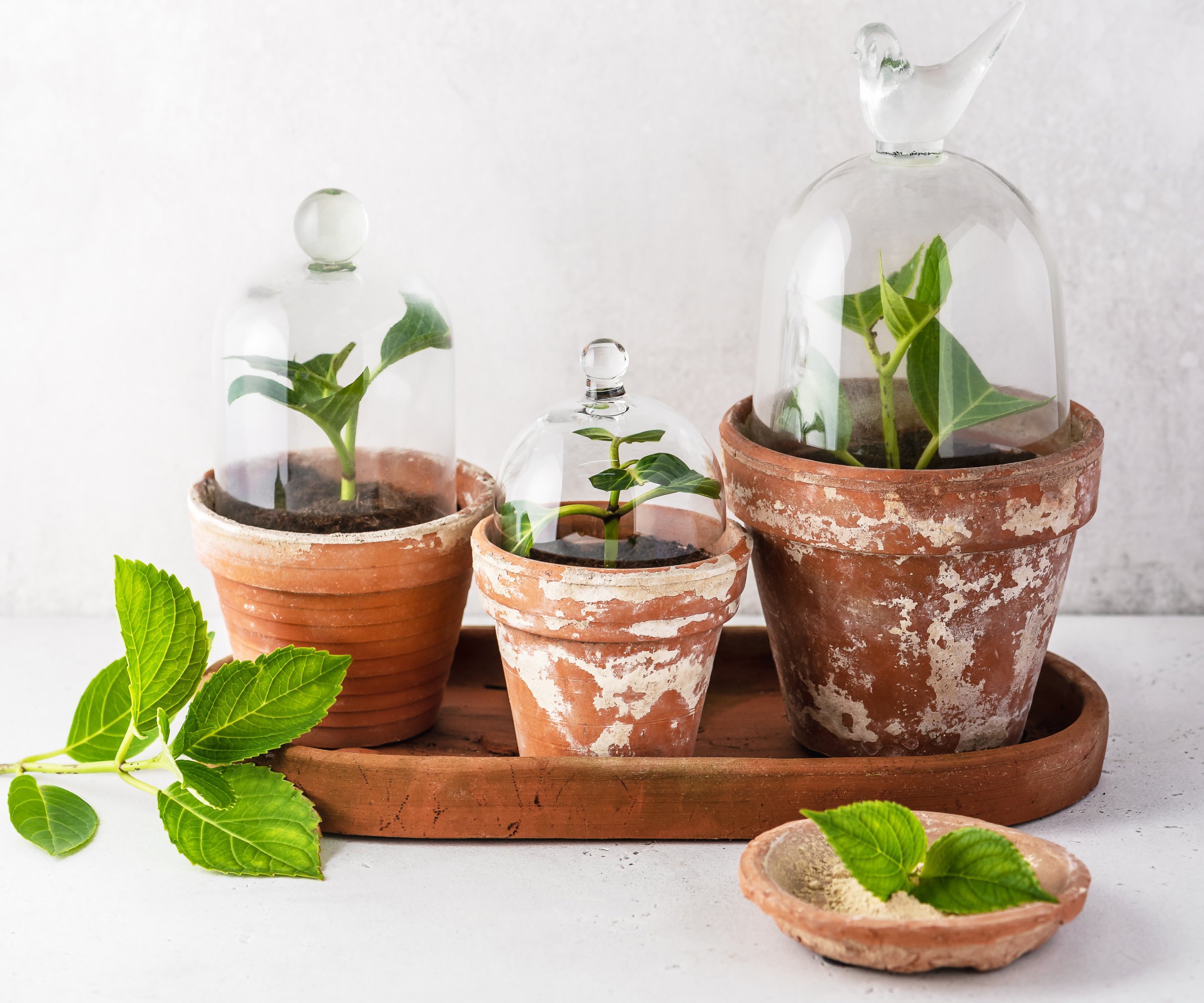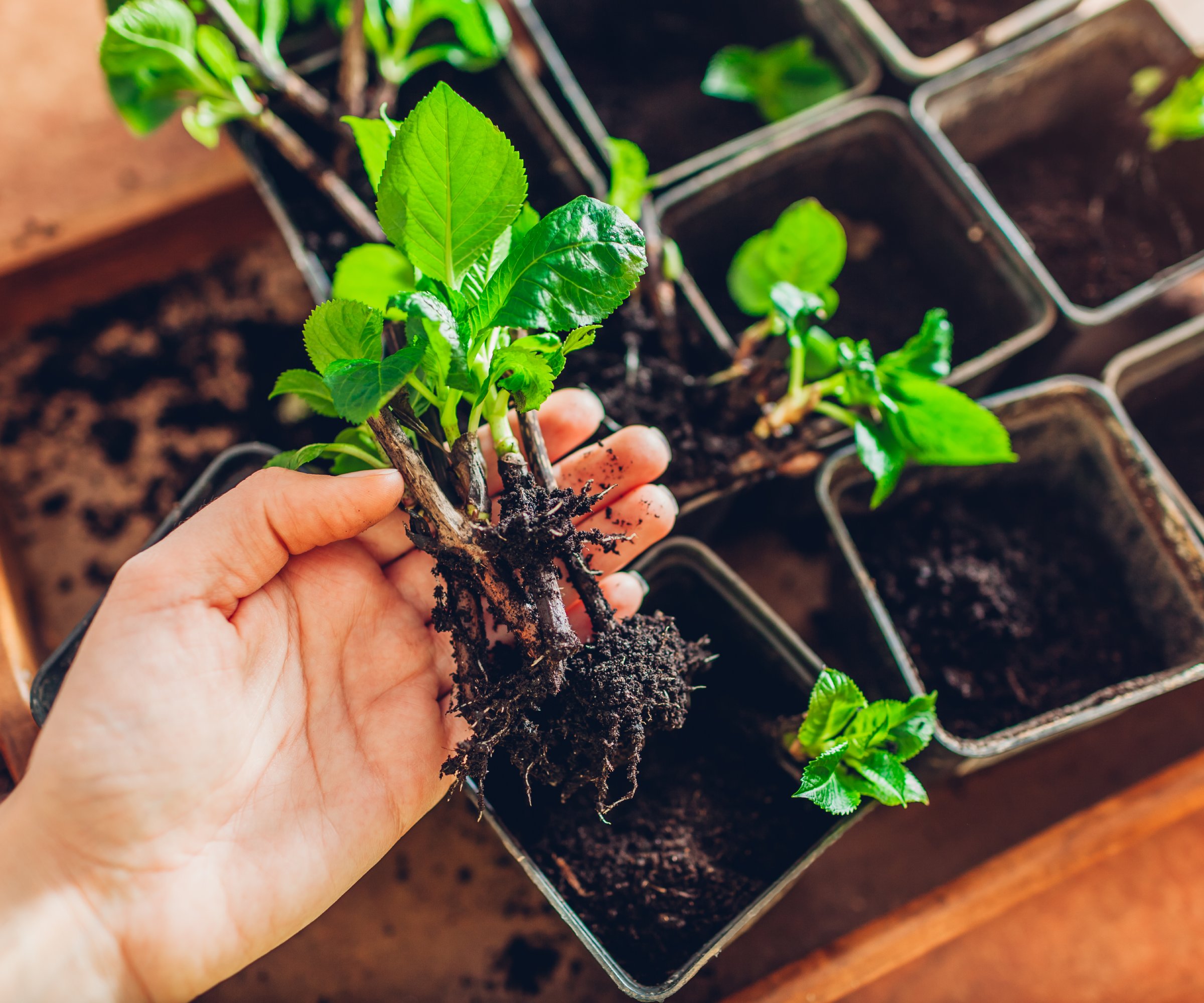Hydrangea Propagation - How To Root Hydrangea Cuttings
To propagate hydrangea cuttings, start with new growth that has no flowers on it. Remove a 6 inch stem, strip the bottom leaves, and dip it in rooting hormone.
Amy Draiss
Hydrangeas are a mainstay of many a flower garden and front yard. This is because of their famously showy blooms. But, like a lot of commercially sold plants, hydrangea seeds don't grow true to type, meaning any plants you grow from seed will likely look nothing like their parents. That's why knowing how to propagate hydrangeas from cuttings (which will always result in an identical plant) is so important.
Here we'll go into the step by step process of selecting and taking hydrangea cuttings, rooting them in soil or water, and potting them up to grow into their own new hydrangea bushes. Let's get started!
When To Propagate Hydrangeas
The best time to propagate hydrangeas from cuttings is early autumn. It's not a dealbreaker if you do it out of season, but this is the time when you'll have the best chance of your cuttings actually producing roots.
How To Select A Hydrangea Cutting
The best hydrangea stems to take for cuttings are new growth. New growth stems will be lighter green in color than old growth stems. Be aware that if you live in a colder climate where shrubs die back to the ground every year due to hydrangea winter kill, the whole thing may consist of new growth, and you can take your pick.
Make sure that your new growth cutting is free from flowers and is at least 6 inches (15 cm.) long.
How to Propagate Hydrangeas from Cuttings
Now that you've found the perfect hydrangea cutting (or cuttings), let's get propagating.
1. Take Your Cutting

With a sharp pair of shears, cut the stem off just below a leaf node. A leaf node is where a set of leaves will be growing. Your hydrangea cutting should contain at least one additional set of leaves above the selected leaf node. Snip the cutting from the stem.
2. Trim The Leaves

Remove any leaves that are low down on the cutting. Then cut the remaining leaves in half crosswise (not lengthwise). This allows the cutting to keep photosynthesizing, but decreases the demand for water and puts less stress on the plant.
3. Apply Rooting Hormone

If available, dip the end of the cutting in rooting hormone. It's totally possible to root hydrangeas without rooting hormone, but using it will increase your chances of success.
4. Place The Cutting In Soil

Stick the cutting about an inch (2.5 cm) deep into damp potting soil.
5. Cover Your Cuttings

Cover the pot with a plastic bag or glass cloche, making sure that it doesn't touch the leaves of the hydrangea cutting.
6. Let Your Roots Grow

Place the pot in a sheltered location out of direct sunlight. Check the hydrangea cutting every few days to make sure the soil is still damp.

In about two to four weeks, your hydrangea cutting should have started growing roots. It will hold fast in its soil, and soon it should start producing new greenery. Move it into the sun and make sure to keep it well watered to encourage root growth. If the pots you started with are getting crowded, transplant them into bigger containers.
Sign up for the Gardening Know How newsletter today and receive a free copy of our e-book "How to Grow Delicious Tomatoes".
Rooting Hydrangeas In Water

If you want to watch the roots grow on your cutting, it's also possible to root hydrangeas in water. Simply follow the above steps through step four, then in instead of sinking it into soil, place your cutting into a clear glass or jar of water. Make sure that the leaves are not touching the water. Change the water daily. Once roots begin to form, you can move the hydrangea cutting to moist soil.
Be aware that propagating hydrangea cuttings in water is not usually as successful as using soil. This is because the water-grown root system is often weaker, and can be damaged during the move to soil.
That's not to say you shouldn't try, though! If you have enough cuttings, why not do both methods, and see which one works better for you?

The only child of a horticulturist and an English teacher, Liz Baessler was destined to become a gardening editor. She has been with Gardening Know how since 2015, and a Senior Editor since 2020. She holds a BA in English from Brandeis University and an MA in English from the University of Geneva, Switzerland. After years of gardening in containers and community garden plots, she finally has a backyard of her own, which she is systematically filling with vegetables and flowers.
- Amy DraissDigital Community Manager

